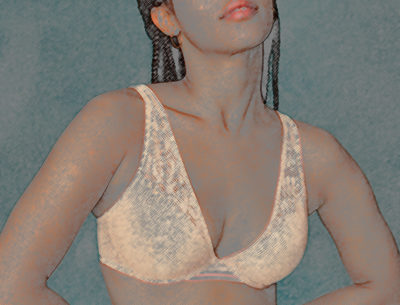 The pandemic has caused us to rethink everything we wear—including bras. In recent weeks, that marvel of engineering has received a surge of media attention, as many women ditch rigid body shapers in favor of gentler support. The following articles feature FIT faculty and curators offering historical context and commercial insights.
The pandemic has caused us to rethink everything we wear—including bras. In recent weeks, that marvel of engineering has received a surge of media attention, as many women ditch rigid body shapers in favor of gentler support. The following articles feature FIT faculty and curators offering historical context and commercial insights.
In a March 18 New York Times article titled, “‘Women Don’t Want to Be Harnessed Anymore,'” Colleen Hill, curator of Costume and Accessories at The Museum at FIT, noted that the trend toward more comfortable bras began well before the pandemic, with the invention of the wire-free bra more than 50 years ago. It’s not just comfort that’s selling these days: Alumna Jennifer Zuccarini, founder of luxury intimates brand Fleur du Mal, said racy bras with open cups have been flying off the shelves.
Need a new bra after a year of living untethered? Fashion Design faculty member Jaclyn Fredenburg, along with Colleen Hill, helped Wirecutter choose “The Best, Most Affordable Bras,” in a report published March 8. According to Fredenburg, “The lingerie market has been very disrupted in recent years, allowing some amazing brands to enter into it,” she said.
Valerie Steele, director and chief curator of The Museum at FIT, discussed the history of bras and corsets in a March 10 History.com article titled, “How World War I Helped Women Ditch the Corset.” Steele said, “Women never really gave up the corset. They internalized it through diet and exercise, tummy tucks and liposuction. Once clothing began to show more skin, you had to actually change your body or have a different attitude toward your body.”
Colleen Hill of MFIT believes those attitudes are finally changing. In “After the Year of No Bras, Things Are Looking Up,” in Vanity Fair (March 10), Hill talked about the trend toward comfort and self-acceptance. She said that women no longer feel the need to “live up to some particular ideal, but in fact to embrace what we have, and what we don’t have, in the case of the breast.”
